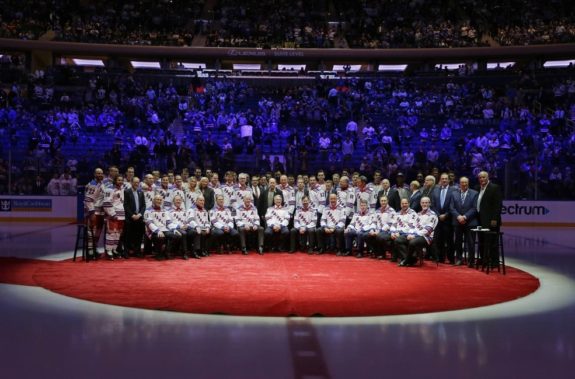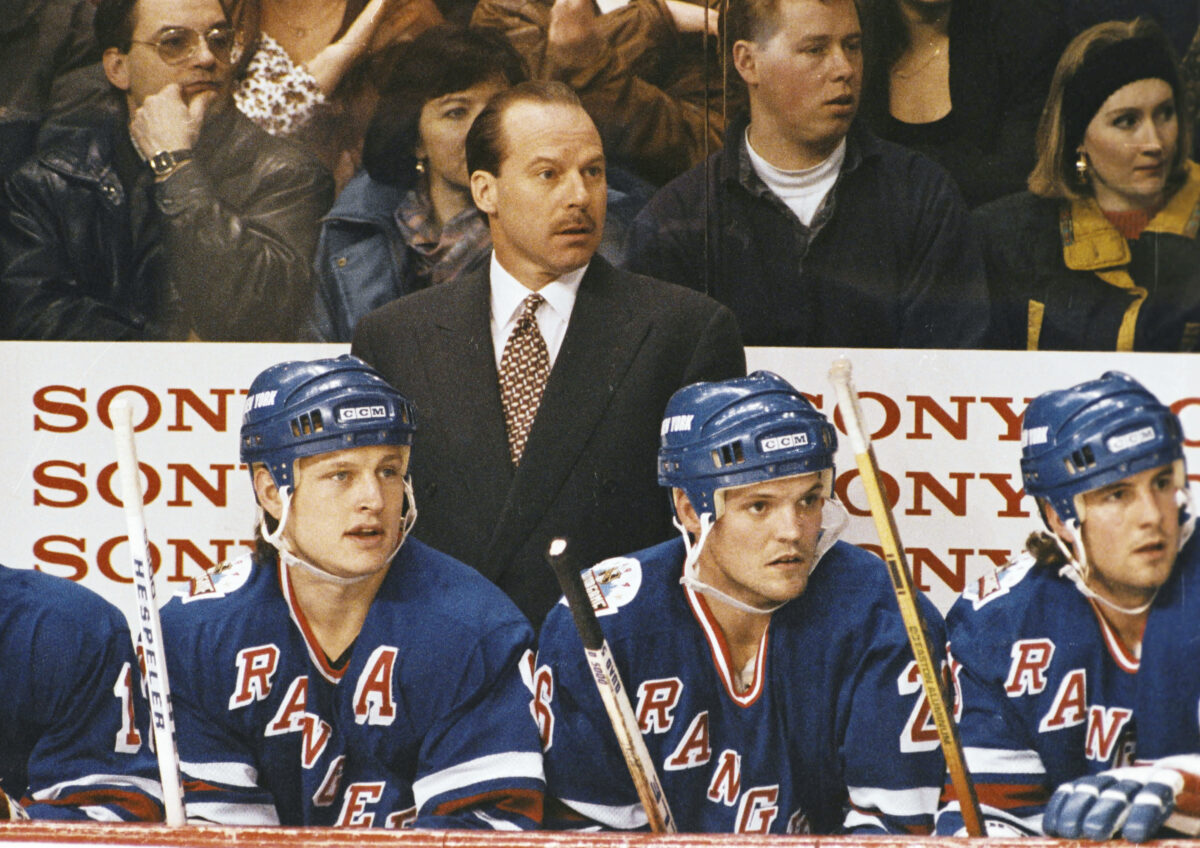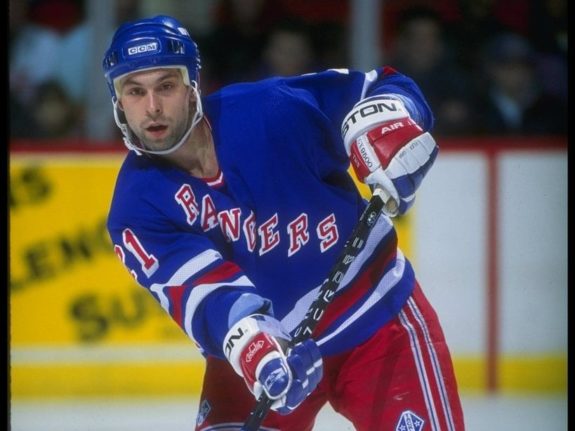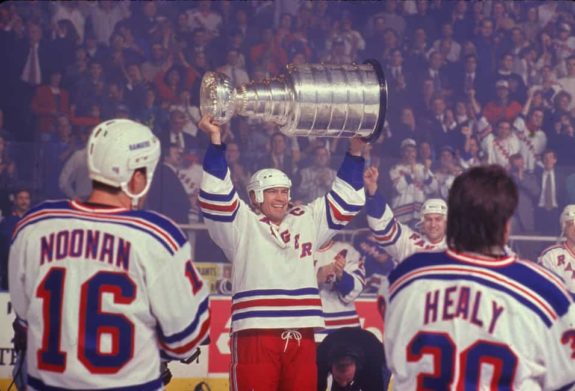A lifetime of disappointment. That is what haunted the New York Rangers heading into the 1993-94 season. It had been 54 years since their last Stanley Cup victory, and the pedigree of their name was fading into the history books.
For an organization with a 3-3 record in the Stanley Cup Final for the first 14 years of their existence, the Rangers only made the final round of the playoffs four times over the next 54 seasons, ending in the Blueshirts’ fourth, and most recent, Stanley Cup championship.

A bracket of the best NHL teams of all-time must include the 1993-94 Rangers because that was exactly what this group was, a team. They were not the product of a multi-year dynasty or a deep-pocket spending spree; they were a team built for one goal: to win the Stanley Cup.
Worst to First
In the early 1990s, the Rangers, led by Roger Neilson behind the bench, were a regular-season powerhouse, a strong team that lacked in areas that could get them over the hump in the playoffs. As it became more apparent that Neilson was losing team captain Mark Messier, and therefore the rest of the locker room midway through the 1992-93 season, general manager Neil Smith decided to fire Neilson and promote assistant coach Ron Smith for the second half of the season. Smith did not fare much better, and the Rangers finished last in the Patrick Division to miss the playoffs for the first time since the 1987-88 season.
New York fired Smith and hired “Iron” Mike Keenan within 24 hours after the season ended, which sent an instant message to the team about accountability and toughness. The Florida Panthers and Mighty Ducks of Anaheim joined the league the following season, and the expansion draft forced the Rangers to decide which goaltender to protect, Mike Richter or John Vanbiesbrouck. They protected Richter and traded Vanbiesbrouck to the Vancouver Canucks for defenseman Doug Lidster.

The Rangers also added veteran backup Glenn Healy from the Tampa Bay Lightning and depth winger Greg Gilbert, who came over with Keenan from the Chicago Blackhawks. Gilbert became the only player to win a Stanley Cup with both the New York Islanders and Rangers.
Average Performer vs. Top Performer
After breezing through the preseason 7-2-0, including two wins over the Toronto Maple Leafs in London, England, the Rangers began the 1993-94 season with a rough patch. They had a 4-5-0 after their first nine games, prompting Keenan to exclaim that his team must “learn the difference between being an average performer and being a top performer” and that it was “better to find out who can handle these situations in October than in the springtime.”
While Keenan predicted it would take until Christmas for the team to fully grasp his style of play, the Rangers turned it on immediately, going 12-0-2 over the next 14 games and posting an 11-1-1 record in November. By the midway point in the season, they were first in the NHL in points, win percentage, goals against average, penalty killing, and shorthanded goals. Although the formula seemed to be working, there were still a few players Keenan felt did not fit into his system, and Smith acquired Steve Larmer and Nick Kypreos in November and then followed that up with deals at the deadline to get Craig MacTavish, Glenn Anderson, Brian Noonan, and Stephane Matteau.
Reuniting Messier, Esa Tikkanen, and Adam Graves with MacTavish and Anderson from their days in Edmonton, and Larmer, and Noonan from Chicago with Gilbert and Keenan provided the final spark of chemistry that was needed to push the Rangers through the playoffs.
Notable Performances
Sophomore defenseman, Sergei Zubov, led the team throughout the regular season and put up the best numbers of his career with 12 goals and 77 assists. Messier and Graves were not far behind, posting 84 and 79 points, respectively.

The biggest surprise, however, was the phenomenal play by Richter. He played in 68 games for a 42-12-6 record with a .910 save percentage (SV%), 2.57 goals-against average (GAA), and a goals saved above average (GSAA) of 25.5 and was named the MVP of the All-Star Game. Richter continued his dominance through the playoffs, going 16-7 with a .921 SV%, 2.07 GAA, 8.2 GSAA, and four shutouts.
Playoff Punctuation
The playoffs are what made this team one of the greatest, however. Led by Brian Leetch’s 34 points on his way to winning the Conn Smythe, the Eastern Conference Final was the first time the Rangers faced any real adversity. After rolling through the Islanders 4-0 and the Washington Capitals 4-1 in the first two rounds, they dropped the first game of the conference final in double overtime to the New Jersey Devils. The Rangers bounced back and won the next two games, including a double-overtime win of their own, but then lost Games 4 and 5 by a combined score of 7-2.
Then, it happened. The media asked Messier his thoughts on the series after practice between Games 5 and 6. As cool and confident as if it were the preseason games in London, Messier not only predicted that the Rangers would win Game 6 and bring the series back to Madison Square Garden, he delivered.

After being down in the game 2-1, Messier scored two goals to give the Rangers a lead late in the third and then capped off his natural hattrick with an empty-net goal to bring the series back to the Big Apple. A double-overtime winner by Matteau, the third double OT game in the series, clinched the Rangers’ trip to the Stanley Cup Final for the first time since the 1978-79 season.
New York held off the Vancouver Canucks in the Final, winning the series in seven games thanks to Richter’s stellar play, which included a penalty shot save on Pavel Bure in Game 4.
In the end, the 1993-94 Rangers had all the tools to make them one of the best NHL teams of all time. Defense and scoring, grit and determination, goaltending and coaching – everything that you could want in a Stanley Cup Championship team.